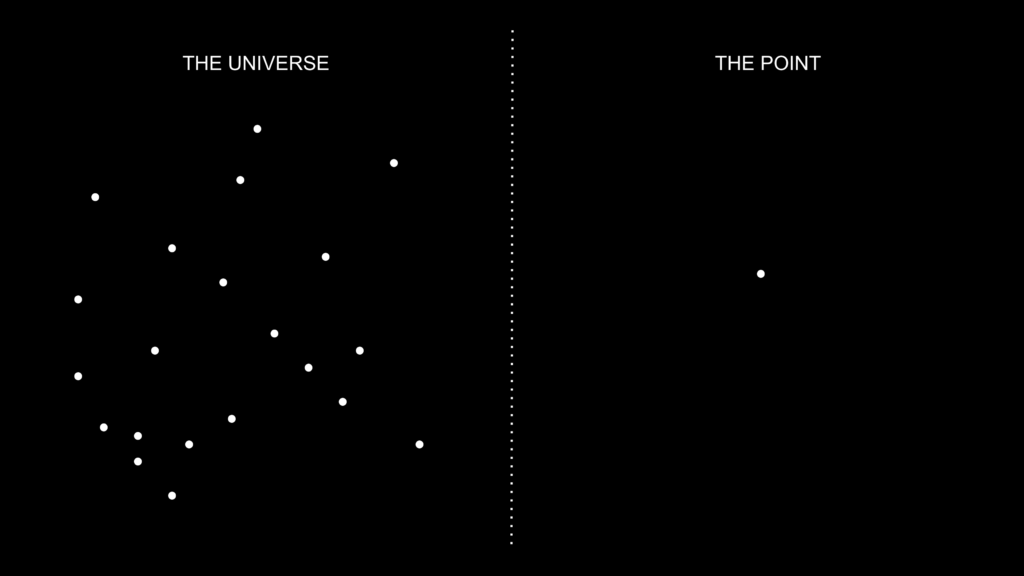
If all particles are a probability distribution across the universe [1] [2], then the universe is a point, and we could call it “The Point”.
For example, an electron interacts in a point because that point was higher in the probability curve than a point of the same electron on the other side of the universe.
All particles have states [3] (mass, position, spin, etc.).
If all particles are a probability distribution across the universe, and all have states, then all particles must be superimposed and the universe must be, indeed, one point.
This may help explain entanglement [4]. The spooky action at a distance part [5]. The explanation may be that distance is just a state.
It seems that what defines a particle is its specific state. That all states are intrinsic.
In other words, that mass and spin are intrinsic, but position and momentum are relative to other particles or their frames of references [6] seems to blur in this conceptualization.
That something is farther away from another thing must be just the consequence of internal states of both. And the internal state of one must modify the internal state of the other.
The Point may be one particle with incredibly diverse possible states, or a very large number of particles all in one point.
It seems it doesn’t really “matter” <- lol.
References
[1] Born Rule – by Wikipedia: https://en.wikipedia.org/wiki/Born_rule
[2] Copenhagen interpretation – by Wikipedia: https://en.wikipedia.org/wiki/Copenhagen_interpretation
[3] Quantum state – by Wikipedia: https://en.wikipedia.org/wiki/Quantum_state
[4] Quantum entanglement – by Wikipedia: https://en.wikipedia.org/wiki/Quantum_entanglement
[5] Action at a distance – by Wikipedia: https://en.wikipedia.org/wiki/Action_at_a_distance
[6] Frame of reference – by Wikipedia: https://en.wikipedia.org/wiki/Frame_of_reference